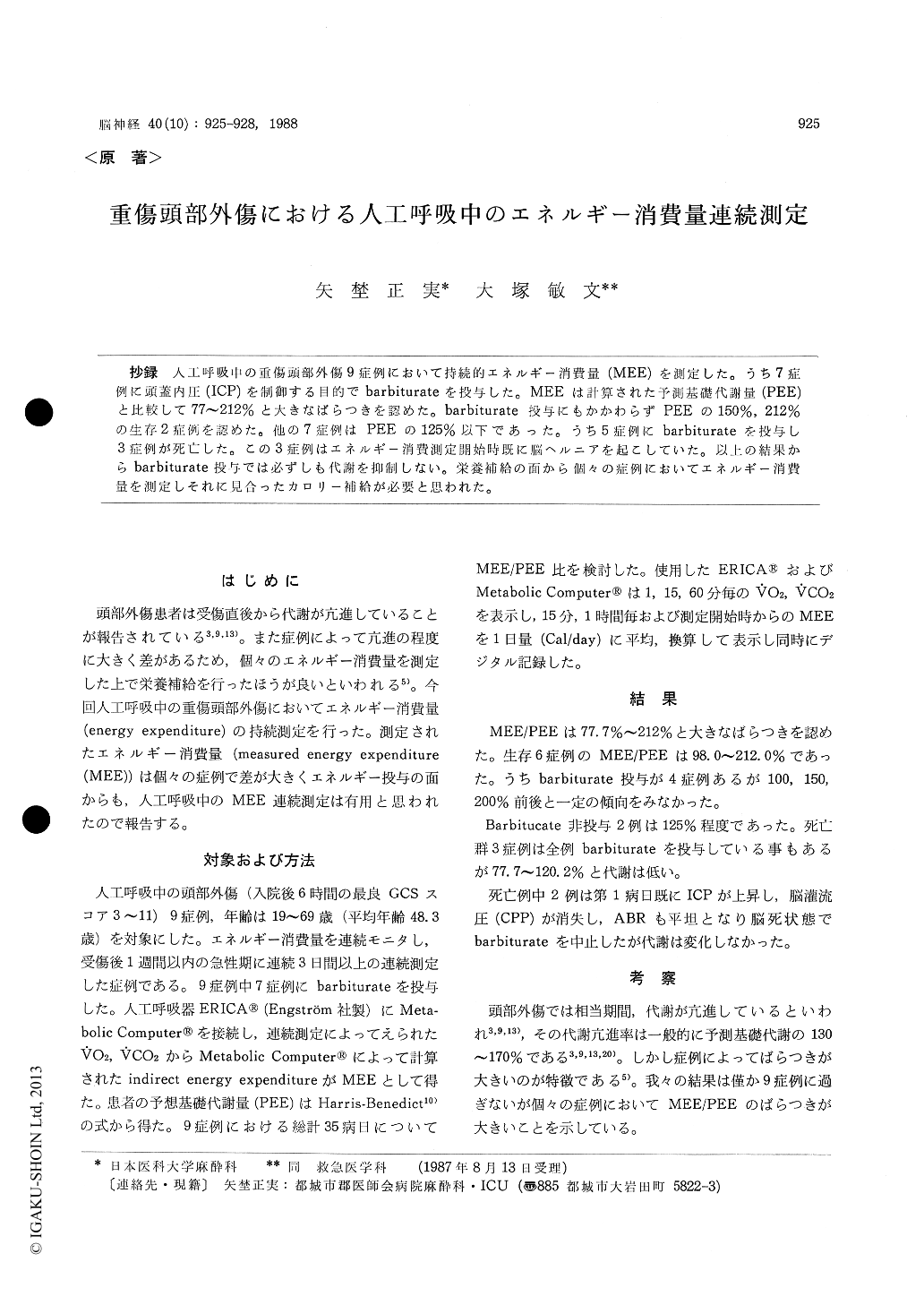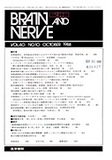Japanese
English
- 有料閲覧
- Abstract 文献概要
- 1ページ目 Look Inside
抄録 人工呼吸中の重傷頭部外傷9症例において持続的エネルギー消費量(MEE)を測定した。うち7症例に頭蓋内圧(ICP)を制御する目的でbarbiturateを投与した。MEEは計算された予測基礎代謝量(PEE)と比較して77〜212%と大きなばらつきを認めた。barbiturate投与にもかかわらずPEEの150%,212%の生存2症例を認めた。他の7症例はPEEの125%以下であった。うち5症例にbarbiturateを投与し3症例が死亡した。この3症例はエネルギー消費測定胴始時既に脳ヘルニアを起こしていた。以上の結果からbarbiturate投与では必ずしも代謝を抑制しない。栄養補給の面から個々の症例においてエネルギー消費量を測定しそれに見合ったカロリー補給が必要と思われた。
In 9 severe head injuries whose respiration was controlled by a ventilator, continuous mea-surements of energy expenditure (MEE) were carried out by the ERICA Metabolic ComputerR. Age was ranged 19 to 69 years old (Mean 48. 3 years). Glasgow Coma Scale score was 3 to 11which were assessed the best score during 6 hours of admission. The MEE was carried out within 7 days of admission and was continued to measure more than 3 days. It measured O2 consumption and CO2 output, and calculated the indirect energy expenditure. The data were dis-played and recorded every 1, 15, 60 min. The value of MEE was compared with predicted energy expenditure (PEE) which was calculated by the Harris-Benedict formula.
Out of 9 patients, 6 patients were survived. High dose barbiturate therapy was performed in 7 patients to control and decrease the intracranial hypertension. Of them 3 patients died. The value of MEE in all 9 patients was variable from 77% to 212% of PEE. The value of MEE in 6 survived patients was 98.0 to 212.0% of PEE. Out of 6 patients, 4 patients who were administered high dose barbiturate showed vari-able data of MEE. Two patients showed about 100% of the PEE, one showed about 150%, and another one about 200%. Remaining 2 survivors who were not administered barbiturate showed about 125% of PEE, which was low value.
These results were divided into two groups. In 2 patients, the value of MEE was 150% or more in spite of barbiturate therapy. In remaining 7 patients, the value of MEE was 125% or less of PEE. Out of 7 patients, 5 patients were andministered barbiturate, 3 died. However, the cerebral herniations had been recognized at the beginning of the MEE in 3 expired patients. The value of MEE in all 3 patients with brain death or near brain death due to cerebral herniation showed the near equal value of PEE, furthermore the value of the MEE did not change after stop of barbiturate administration. Barbiturate therapy did not always suppress the energy expenditure and the value of the MEE is vari-able in severe head injury. The variable value of MEE in high dose barbiturate therapy may dependent on the concentration of barbiturate in blood except for patients with brain death. It is necessary for suitable calorie support to moni-tor the energy expenditure in severely head-in-jured patients with hypermetabolic state.

Copyright © 1988, Igaku-Shoin Ltd. All rights reserved.


